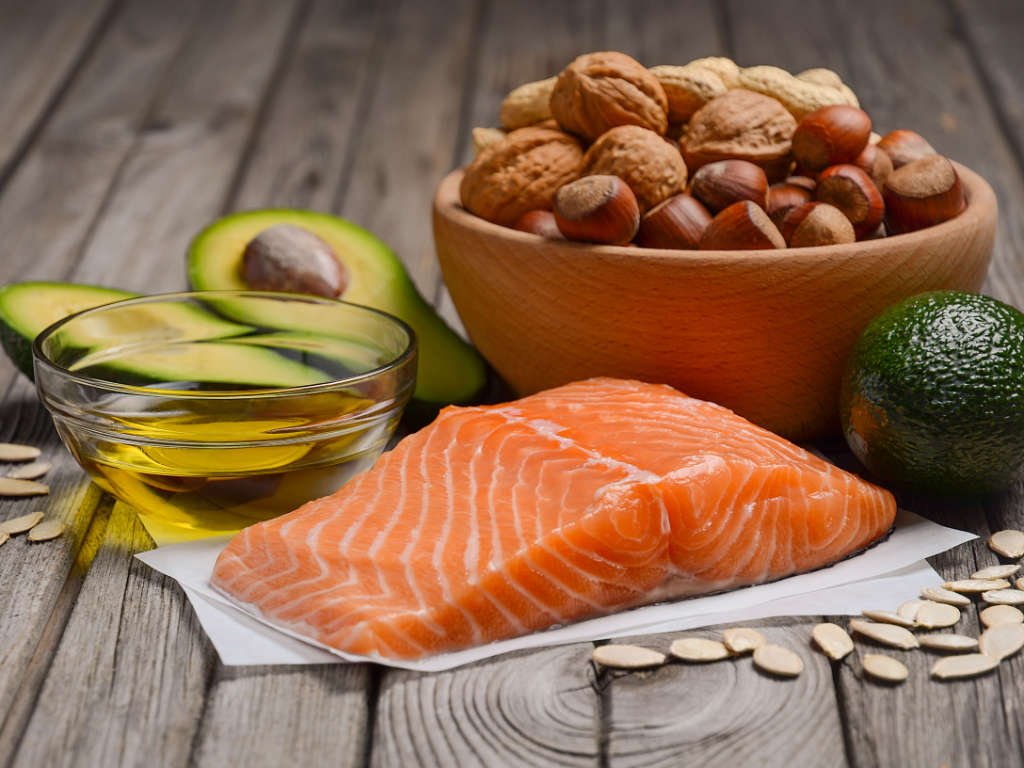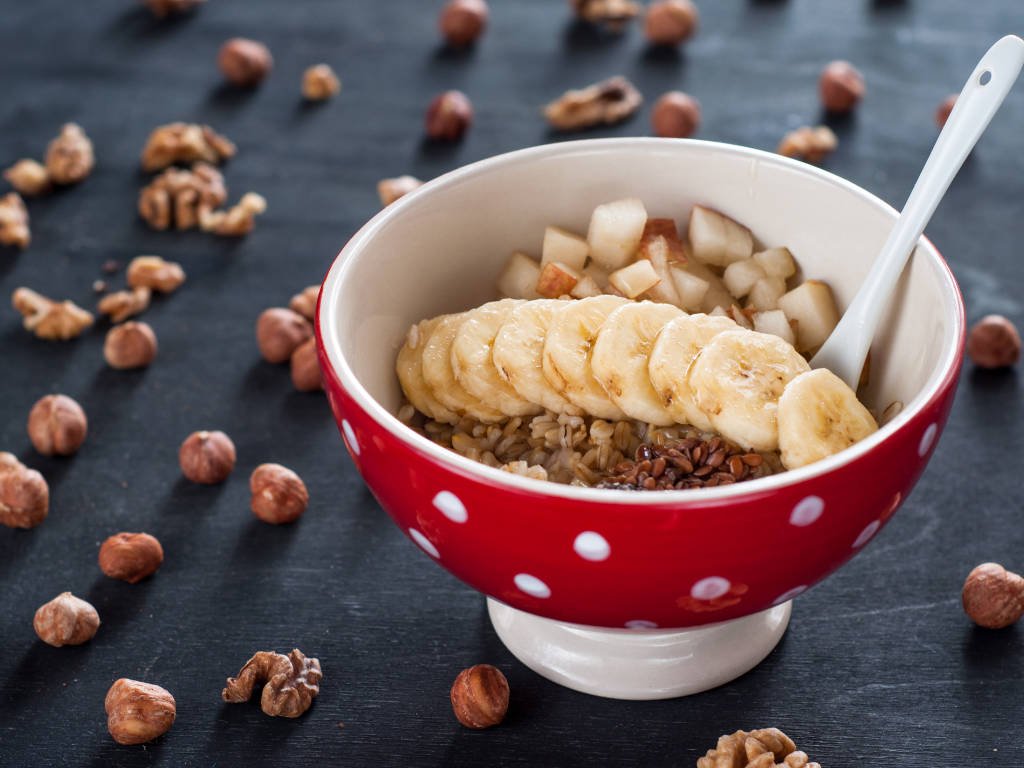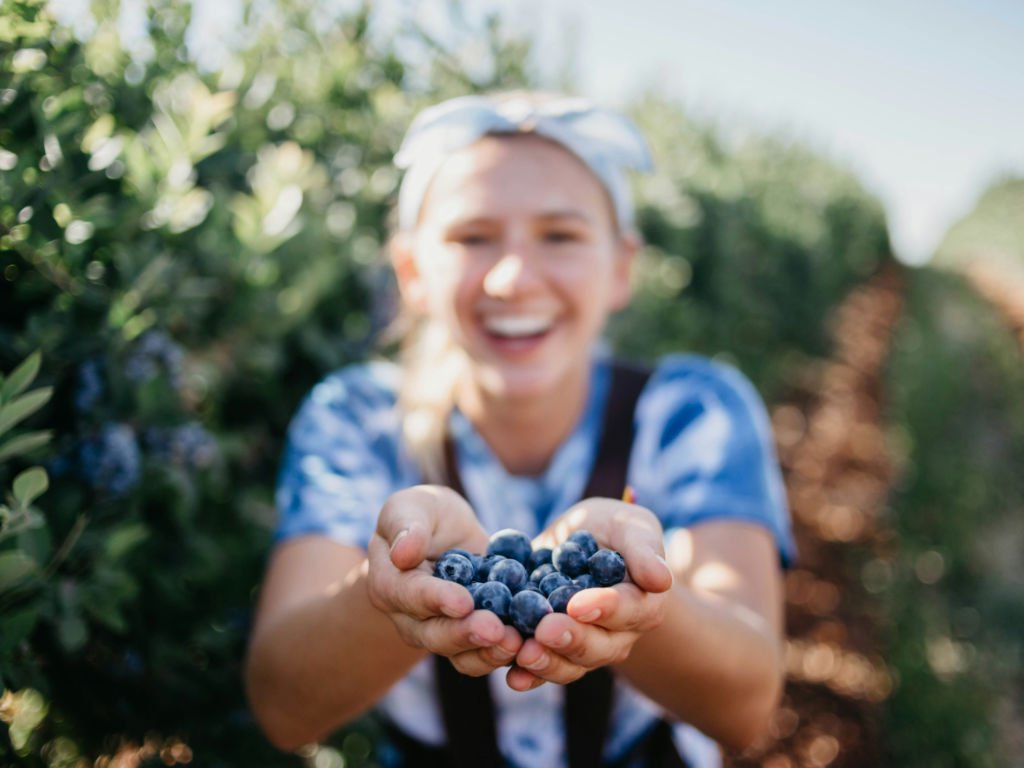Table of Contents
Ever wondered why your energy crashes by 3 PM, or why your skin doesn’t have that healthy glow you’re after? The answer might be simpler than you think. What if I told you that incorporating just a few superfoods into your daily routine could transform not just how you look, but how you feel from the inside out?
You’re probably thinking, “Great, another diet trend,” but hold on—this isn’t about restriction or complicated meal plans. It’s about giving your body exactly what it needs to thrive. As women, we face unique health challenges throughout our lives, from hormonal fluctuations to bone health concerns, and the right nutrition can be our secret weapon.
Let me share something that might surprise you: the foods we’ll explore today aren’t exotic or expensive. They’re nutrient powerhouses that you can find at your local grocery store, and they’re specifically chosen to address the health needs that matter most to women like us.
What Makes a Food “Super” for Women?
Before we dive into the good stuff, let’s get one thing straight—superfoods aren’t some magical category blessed by nutrition gods. They’re simply foods that pack an incredible nutritional punch for their calorie count. Think of them as the overachievers of the food world, loaded with vitamins, minerals, and antioxidants that your body craves.
The term “superfood” isn’t officially regulated, but when we talk about superfoods for women, we’re focusing on foods that address our specific health needs. These nutritional powerhouses typically contain high levels of antioxidants, healthy fats, fiber, and essential nutrients that support everything from hormone production to immune function.
What makes these foods particularly beneficial for women? Our bodies have unique requirements that change throughout our lives. We need more iron during our reproductive years, more calcium for bone health, and specific nutrients to support hormonal balance. The right superfoods can help bridge these nutritional gaps naturally.
The Power of Antioxidants: Your Body’s Personal Bodyguards
Here’s where things get exciting—antioxidants are like having a personal security team for your cells. These natural compounds fight off free radicals, those unstable molecules that damage cells and accelerate aging. Think of free radicals as tiny troublemakers causing chaos in your body, and antioxidants as the peacekeepers restoring order.
Free radical damage contributes to everything from wrinkles to chronic diseases, making antioxidant-rich foods essential for women’s health. The good news? Some of the most delicious foods happen to be antioxidant superstars:
- Blueberries are packed with anthocyanins, which give them that gorgeous color and protect your brain
- Dark chocolate (yes, you read that right!) contains flavonoids that support heart health
- Leafy greens like spinach and kale are loaded with vitamins A, C, and E
- Berries of all kinds are nature’s candy with serious health benefits
The beautiful thing about antioxidants is that they work better together, so eating a variety of colorful foods gives you the best protection. It’s like having a diverse team of superheroes working for your health.
Superfoods That Give Your Skin That Natural Glow

Let’s talk about something we all care about—glowing, healthy skin. You’ve probably spent hundreds on skincare products, but what if I told you that the secret to radiant skin might be sitting in your kitchen right now?
Your skin is essentially a reflection of your internal health, and superfoods for skin health work from the inside out. Here’s the truth: no amount of expensive creams can compete with proper nutrition when it comes to long-term skin health.
Avocados are absolute skin superstars. They’re rich in monounsaturated fats that keep skin moisturized and supple, plus they contain vitamin E, which protects against oxidative damage. I love adding half an avocado to my morning smoothie—it makes it creamy and gives my skin that healthy glow.
Salmon deserves its reputation as a beauty food. Those omega-3 fatty acids don’t just taste good; they reduce inflammation and keep your skin looking plump and youthful. If you’re not a fish fan, walnuts and flaxseeds are excellent plant-based alternatives.
Don’t overlook nuts and seeds—they’re loaded with vitamin E, zinc, and healthy fats that support skin repair and protection. A handful of almonds or sunflower seeds makes a perfect snack that’s actually working to improve your complexion.
The key nutrients for skin health include:
- Omega-3 fatty acids for inflammation control
- Vitamin E for protection against UV damage
- Vitamin C for collagen production
- Zinc for healing and repair
Supporting Your Hormones Through Smart Food Choices
Can we talk about hormones for a minute? They’re like the conductors of your body’s orchestra, and when they’re out of tune, everything feels off. Whether you’re dealing with PMS, pregnancy, or menopause, the right foods can help keep your hormonal symphony in harmony.
Hormonal balance is crucial for women’s health, and certain superfoods can provide natural support during these fluctuations. The amazing thing is that many of these foods are probably already in your pantry.
Flaxseeds are tiny but mighty when it comes to hormonal health. They contain lignans, which are phytoestrogens that can help balance estrogen levels naturally. I like to grind them fresh and sprinkle them on yogurt or blend them into smoothies—they add a subtle nutty flavor while supporting hormone balance.
Broccoli and other cruciferous vegetables deserve special mention here. They contain compounds called indoles that help your liver process estrogen more effectively. It’s like giving your body’s natural detox system a boost. Roasted broccoli with a drizzle of olive oil and garlic is not just delicious—it’s hormone-supporting fuel.
Lentils are protein powerhouses that also provide iron and folate, essential for hormone production. They’re incredibly versatile—throw them in soups, salads, or make a hearty curry. Plus, they’re budget-friendly, which is always a win.
If you’re looking for more comprehensive guidance on hormonal health, check out our detailed guide on hormonal balance tips that covers lifestyle factors beyond nutrition.
Energizing Superfoods for Sustained Power
Forget those afternoon energy crashes—the right superfoods for energy can keep you going strong all day long. We’re not talking about quick sugar fixes that leave you more depleted than before. These foods provide sustained energy that actually nourishes your body.
Quinoa is what I call the perfect grain (technically, it’s a seed, but who’s counting?). It’s a complete protein, meaning it contains all nine essential amino acids your body needs. Plus, it’s rich in complex carbohydrates that provide steady energy release. I meal prep quinoa bowls on Sundays—they’re my secret weapon for busy weekdays.
Bananas might seem basic, but they’re actually sophisticated energy providers. They contain natural sugars for quick energy, plus potassium and B6 for sustained power. The fiber helps prevent blood sugar spikes, so you avoid that dreaded energy crash.
Nuts are nature’s energy bars. They combine healthy fats, protein, and a touch of carbs for balanced fuel. Keep a small container in your purse for those moments when you need a quick energy boost without the crash.
Here’s a simple energy-boosting breakfast that I swear by: overnight oats with sliced banana, a tablespoon of almond butter, and a sprinkle of chia seeds. It takes five minutes to prepare the night before, and it keeps me energized for hours.
For more comprehensive nutrition guidance, explore our ultimate balanced diet guidelines that complement these superfood choices.

Building a Fortress: Immune-Supporting Superfoods
Your immune system is working 24/7 to keep you healthy, and it deserves all the support it can get. Immune-boosting superfoods can help fortify your body’s natural defenses, especially during cold and flu season or times of stress.
Garlic has been used medicinally for thousands of years, and science backs up its immune-supporting properties. It contains allicin, a compound with antimicrobial effects. I love roasting whole garlic cloves until they’re soft and sweet—it’s delicious and therapeutic.
Citrus fruits are vitamin C powerhouses, but they offer so much more. They also contain flavonoids that enhance immune function. A squeeze of lemon in your morning water or a grapefruit for breakfast can help start your day with immune support.
Spinach is incredibly versatile and packed with nutrients that support immune function, including vitamins A, C, and E, plus folate and iron. I throw a handful into smoothies, omelets, or pasta dishes—it’s so mild that it barely affects the taste while boosting nutrition significantly.
The key to immune support through nutrition is consistency. You can’t just eat an orange when you feel a cold coming on and expect miracles. Regular intake of these nutrient-dense foods helps maintain your immune system’s readiness to protect you.
The Top 10 Superfoods Every Woman Should Know
Let’s get specific about the superfoods that deliver the biggest impact for women’s health. These aren’t just trendy ingredients—they’re backed by research and chosen for their ability to address women’s unique nutritional needs.
1. Blueberries: The Brain-Boosting Berries
These little gems are packed with anthocyanins that support cognitive function and memory. Studies suggest they may help protect against age-related mental decline. Add them to yogurt, oatmeal, or eat them by the handful.
2. Salmon: The Omega-3 Champion
Wild-caught salmon provides high-quality protein and omega-3 fatty acids that support heart health, brain function, and skin health. Aim for 2-3 servings per week if possible.
3. Avocados: The Healthy Fat Heroes
Rich in monounsaturated fats, fiber, and potassium, avocados support heart health and help with nutrient absorption. They’re also incredibly satisfying, which can help with weight management.
4. Greek Yogurt: The Protein Powerhouse
High in protein and probiotics, Greek yogurt supports digestive health and provides sustained energy. Choose plain varieties to avoid added sugars.
5. Sweet Potatoes: The Complex Carb Champions
Loaded with beta-carotene, fiber, and potassium, sweet potatoes provide sustained energy and support immune function. They’re also naturally sweet and satisfying.
6. Eggs: The Complete Protein
Eggs contain all essential amino acids plus choline, which supports brain health. They’re versatile, affordable, and provide high-quality nutrition.
7. Dark Leafy Greens: The Nutrient Density Champions
Spinach, kale, and other leafy greens are loaded with vitamins A, C, and K, plus folate and iron. They support everything from bone health to immune function.
8. Nuts and Seeds: The Healthy Fat All-Stars
Almonds, walnuts, chia seeds, and flaxseeds provide healthy fats, protein, and fiber. They’re perfect for snacking or adding to meals for extra nutrition.
9. Beans and Legumes: The Fiber and Protein Providers
Lentils, chickpeas, and black beans are excellent sources of plant-based protein and fiber. They support digestive health and provide sustained energy.
10. Green Tea: The Antioxidant Beverage
Rich in catechins and EGCG, green tea supports metabolism and provides gentle energy without the jitters. It’s also hydrating and calming.

How to Incorporate These Superfoods Into Your Daily Routine
The best superfoods in the world won’t help you if they’re just sitting in your kitchen unused. The secret is making them so convenient and delicious that eating them becomes second nature.
Start small and build gradually. Don’t try to overhaul your entire diet overnight. Pick 2-3 superfoods from the list and focus on incorporating them consistently for a week. Once that feels natural, add another one or two.
Meal prep is your friend. Spend 30 minutes on Sunday washing and chopping vegetables, cooking quinoa, or preparing overnight oats. Having these ready makes it easy to grab nutritious options during busy weekdays.
Think about addition, not restriction. Instead of focusing on what you can’t eat, think about adding these nutrient-dense foods to what you already enjoy. Throw spinach in your pasta sauce, add berries to your cereal, or include nuts in your salad.
For those following specific dietary approaches, you might be interested in our guide on the Mediterranean diet which naturally incorporates many of these superfoods.
Addressing Common Concerns About Superfoods
I know what you’re thinking—”This sounds great, but I’m worried about the cost” or “I’m too busy to eat this way.” Let me address these concerns head-on because I’ve heard them all before.
Budget-friendly superfood swaps: You don’t need to shop at expensive health food stores. Frozen berries are just as nutritious as fresh ones and often more affordable. Canned salmon is budget-friendly and shelf-stable. Dried beans and lentils cost pennies per serving and provide excellent nutrition.
Time-saving strategies: Many superfoods require minimal prep. Nuts and seeds can be eaten as-is. Canned fish makes quick protein additions to salads. Frozen vegetables cook in minutes and are often more nutritious than fresh ones that have been sitting around.
Taste preferences: If you’re not used to eating these foods, start with familiar preparations. Blend spinach into fruit smoothies where you won’t taste it. Try roasted vegetables with your favorite seasonings. Make homemade trail mix with nuts and dried fruit.
Remember, perfectionism is the enemy of progress. You don’t need to eat every superfood every day. Focus on adding variety and nutrition to your diet in a way that feels sustainable for your lifestyle.
The Science Behind Superfoods for Women’s Health
Let’s dive into what the research actually says about these nutritional powerhouses. The evidence supporting the benefits of nutrient-dense foods for women’s health is compelling and continues to grow.
A study published found that women who consumed more antioxidant-rich foods had better cognitive function and reduced risk of age-related decline. The Cleveland Clinic notes that while the term “superfood” isn’t scientifically regulated, these nutrient-dense foods do provide measurable health benefits.
Research from Harvard shows that women who eat more omega-3 rich foods like salmon have reduced inflammation markers and better heart health outcomes. The anti-inflammatory effects of these foods are particularly important for women, who face increased inflammation risk during hormonal transitions.
When it comes to hormonal health, studies have shown that women consuming more fiber-rich foods like beans and lentils have better hormone balance and reduced PMS symptoms. The phytoestrogens in flaxseeds have been studied for their potential to ease menopausal symptoms naturally.
The key takeaway? While individual foods aren’t magic bullets, a pattern of eating nutrient-dense, whole foods consistently provides measurable health benefits for women across all life stages.
Superfoods for Different Life Stages
Your nutritional needs change throughout your life, and the superfoods that serve you best will evolve too. Let’s break down how to optimize your choices for different phases of womanhood.
Reproductive Years (20s-40s)
During these years, you need adequate iron to replace what’s lost during menstruation, plus folate for potential pregnancy. Focus on:
- Leafy greens for folate and iron
- Lean proteins like eggs and fish for sustained energy
- Citrus fruits for vitamin C to enhance iron absorption
- Avocados for healthy fats that support hormone production
Perimenopause and Menopause (40s-50s)
As hormones fluctuate, calcium for bone health becomes crucial, along with foods that support heart health. Prioritize:
- Calcium-rich foods like Greek yogurt and leafy greens
- Omega-3 rich foods like salmon and walnuts for heart health
- Flaxseeds for their phytoestrogen content
- Antioxidant-rich berries for cognitive support
Post-Menopause (50s and beyond)
Bone health, heart health, and cognitive function become primary concerns. Focus on:
- Protein-rich foods to maintain muscle mass
- Vitamin D sources (often requiring supplementation)
- Antioxidant-rich foods for cognitive protection
- Fiber-rich foods for digestive and heart health
For more specific guidance on managing health through these transitions, explore our women’s wellness and beauty guide that addresses these life stage concerns comprehensively.
Frequently Asked Questions About Superfoods for Women
Q: Do I need to eat organic superfoods to get the benefits?
A: While organic is great when budget allows, conventional superfoods still provide excellent nutrition. The most important thing is eating a variety of nutrient-dense foods consistently. If budget is a concern, prioritize organic for the “dirty dozen” fruits and vegetables that tend to have higher pesticide residues.
Q: Can I get all my nutrients from superfoods alone?
A: Superfoods are fantastic additions to a varied diet, but they shouldn’t be your only source of nutrition. A balanced diet with a variety of whole foods is still the gold standard. Think of superfoods as nutritional insurance, not replacements for a well-rounded eating pattern.
Q: Are superfood powders and supplements as good as whole foods?
A: While supplements can be helpful, whole foods provide fiber, water, and other compounds that work synergistically with nutrients. Focus on whole foods first, and consider supplements to fill specific gaps in your diet under guidance from a healthcare provider.
Q: How quickly will I see results from adding superfoods to my diet?
A: Some changes, like improved energy levels, might be noticeable within a week or two. However, most significant health benefits develop over months of consistent healthy eating. Be patient with yourself and focus on how you feel rather than just what you see.
Q: Are there any superfoods I should avoid?
A: Most superfoods are safe for healthy adults, but some people may need to be cautious. For example, if you take blood thinners, large amounts of leafy greens might interact with your medication. Always consult with your healthcare provider about significant dietary changes, especially if you have health conditions or take medications.
Making Superfoods a Sustainable Part of Your Life
The real magic happens when eating nutrient-dense foods becomes second nature rather than a chore. Here’s how to make that transition smooth and sustainable.
Start where you are, not where you think you should be. If you currently eat fast food most days, jumping to a fully superfood-based diet overnight isn’t realistic. Begin by adding one superfood to meals you already enjoy. Put berries on your cereal, add spinach to your sandwich, or snack on nuts instead of chips.
Focus on crowding out rather than cutting out. When you fill up on nutrient-dense foods, you naturally have less room for less nutritious options. It’s a gentler approach that doesn’t trigger the restriction mindset that often leads to giving up.
Make it convenient. Keep nuts and seeds in your car, purse, or desk drawer. Pre-wash berries and vegetables so they’re ready to eat. Keep canned fish and frozen vegetables on hand for quick meal additions.
Find versions you actually enjoy. If you hate raw kale, try it roasted with olive oil and sea salt. If plain Greek yogurt is too tart, mix it with a little honey and vanilla. The best superfood is the one you’ll actually eat regularly.
Consider exploring our sustainable weight loss secrets for additional strategies on making healthy eating a permanent part of your lifestyle.
Creating Your Personal Superfood Action Plan
Ready to put all this knowledge into action? Here’s your roadmap to incorporating superfoods into your daily life without overwhelm.
Week 1-2: The Foundation
Choose three superfoods from our list that you already somewhat enjoy or feel curious about. Maybe it’s blueberries, avocados, and Greek yogurt. Focus on having one of these each day in any form that appeals to you.
Week 3-4: Building Momentum
Add two more superfoods to your rotation. Start thinking about combining them—maybe Greek yogurt with berries, or avocado toast with a side of eggs. Notice how these additions make you feel.
Week 5-6: Expanding Your Range
Introduce vegetables or less familiar options like flaxseeds or different types of fish. Experiment with new preparation methods. Try roasting vegetables you usually eat raw, or blend leafy greens into smoothies.
Week 7-8: Making It Yours
By now, you should have a good sense of which superfoods you enjoy and which preparation methods work for your lifestyle. Focus on consistency rather than perfection. Create go-to meals and snacks that feature your favorite combinations.
Beyond Two Months: Lifestyle Integration
Continue expanding your repertoire gradually. Try seasonal variations, explore new recipes, and don’t be afraid to repeat combinations you love. The goal is sustainable nutrition that enhances your life rather than complicating it.
The Ripple Effect: How Superfoods Transform More Than Just Your Health
Here’s something beautiful that happens when you start nourishing your body with nutrient-dense foods—the benefits ripple out into other areas of your life in ways you might not expect.
Energy levels improve, which means you’re more present for your family, more productive at work, and more likely to engage in activities you enjoy. When you feel good physically, it’s easier to show up as your best self in all areas of life.
Mood stabilizes as your blood sugar becomes more balanced and your brain gets the nutrients it needs to produce feel-good neurotransmitters. Many women report feeling more emotionally resilient when they eat well consistently.
Confidence grows as you start feeling better in your own skin. When you’re taking care of yourself from the inside out, it shows in how you carry yourself and interact with others.
Relationships often improve because you have more energy and patience for the people you care about. Plus, when you model healthy habits, you often inspire others to make positive changes too.
If you’re interested in a more holistic approach to wellness, check out our guide on mental and emotional wellness that explores how nutrition connects to overall wellbeing.
Your Journey Starts Now
We’ve covered a lot of ground together, from the science behind superfoods to practical strategies for incorporating them into your daily routine. But here’s the thing—all this information is only valuable if you actually use it.
You don’t need to be perfect. You don’t need to eat every superfood every day. You don’t need to completely overhaul your diet overnight. You just need to start somewhere, and then keep moving forward one small step at a time.
The superfoods we’ve discussed—from antioxidant-rich berries to omega-3 packed salmon, from hormone-supporting flaxseeds to energy-boosting quinoa—are tools in your wellness toolkit. They’re not magical solutions, but they are powerful allies in your journey toward better health.
Remember, the best superfood is the one you’ll actually eat regularly. Start with what appeals to you, experiment with different preparations, and be patient with yourself as you develop new habits. Your body is incredibly resilient and responsive—give it the high-quality fuel it deserves, and it will reward you with improved energy, better health, and a greater sense of vitality.
The journey toward optimal health isn’t about perfection—it’s about progress. Every nutritious choice you make is an investment in your future self. Every superfood you add to your diet is a step toward feeling your absolute best.
So, what superfood will you try first? Your healthiest, most vibrant self is waiting, and it all starts with the very next meal you eat. Choose wisely, eat joyfully, and watch as these nutritional powerhouses transform not just your health, but your entire approach to living well.
Your body has carried you through every challenge and celebration in your life—isn’t it time to give it the premium fuel it deserves? The world of superfoods is waiting for you to explore, and your journey to optimal health starts with a single, delicious bite.



